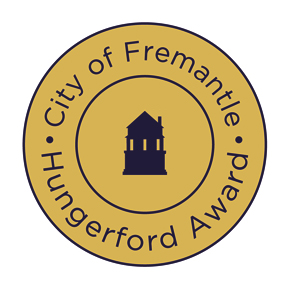Delys Bird steps down as judge of the T.A.G. Hungerford Award after 15 years and looks back on her time judging one of Western Australia’s top writing prizes

I first became a judge of the T.A.G. Hungerford Award in 2004, and have remained on the judging panel since.
At that time, I was on the board of Writing WA, which then managed the award and provided one of the judges. I volunteered, and have been privileged to be involved in the management and judging of the award since then, although the line-up of the always three-member judging panel has sometimes changed.
Over these years, the number of manuscripts submitted by previously unpublished writers to the award has remained consistently between 40 and 60. Each of the judges reads, in part or entirely, all the work. Thus the judging extends over several months, and even just the physical work involved in handling so many manuscripts, some very long, was sometimes quite daunting. But in 2018, Fremantle Press, who now manages the award, changed the process to require manuscripts to be submitted electronically, and the judges now receive them in this form. This change made the administration of the award simpler and the judges’ work easier.
One of the great pleasures of judging this award was the interaction with fellow judges. We kept careful notes on each manuscript and exchanged views on their relative merits as the judging progressed, arguing – amicably but often forcefully – finally over a shortlist, which is then sent to publisher Georgia Richter at Fremantle Press. Georgia, along with other members of the Fremantle Press team, made the final decision about a winner. This aspect of the award is unique as far as I know. It removes that deep anxiety that is always part of judging, about actually choosing a winner out of what are often several very good manuscripts. Plus it allows the various departments of Fremantle Press the chance to make a professional decision about which manuscript (or manuscripts, as the case has been) to publish.
It’s this possibility of gaining publication by a prestigious publishing house that is the most valuable aspect of this award. Over the years, there has been a significant increase in the number of polished manuscripts submitted to the Hungerford; there are always surprises in both the content and quality of the writing. It’s a testament to the strength of the writing culture in Western Australia that so many writers complete a long manuscript, itself an achievement, in the hope of finding publication. The immense satisfaction each of the winners achieves by seeing their work in book form is matched by the thrill the judges get when these books are launched. I treasure all of them.
The award is significant, too, in that it keeps Tom Hungerford’s name alive and honours his writing, so embedded in our own local writing and social history. His interest in and support of up-and-coming writers is part of that history. Towards the end of his life, he attended the 2006 Hungerford Award ceremony, where he spontaneously donated extra money to enable one of the runners-up to be published. It was a special moment. And there are many of them, for the writers, the publishers, those that keep the award going, and the judges.
Long may the Hungerford Award flourish and continue its proud history.
Delys Bird


